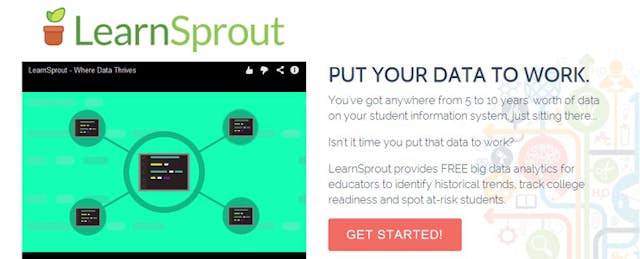LearnSprout knows a thing or two about pivots. When the startup first joined the Imagine K12 accelerator in 2012, the team briefly entertained the idea of building a new student information system (SIS).
That plan was quickly scrapped. “There were already too many SIS’s, and we didn’t want to build another one,” says co-founder Franklyn Chien. Instead the team developed an API to help developers communicate with existing SIS’s and make it easy for school admins to create student accounts for online learning tools from different vendors.
LearnSprout soon had a strong competitor in Clever, a Y Combinator graduate offering the same service. Other learning management services offered by the likes of Engrade and Education Elements also built their own APIs to integrate student data with third-party applications. And still other student information systems, including Pearson’s PowerSchool and Eagle Software’s Aeries, were building their own integration solutions.
“The marketplace was getting very crowded with APIs,” LearnSprout’s Director of Marketing, Paul Smith, tells EdSurge. “The value proposition and revenue margins were shrinking.”
During the summer of 2013, Smith says LearnSprout decided to “throw the towel in.” By the end of the year, LearnSprout officially told its 35 third-party vendors that it would no longer be in the business of account provisioning.
Instead, the company decided to get into the data visualization business. It was a natural direction, says Chien, since the company already had the technology to tap into student information systems. “What we were hearing from administrators at the time was that they wanted to make sense of all the data that was being collected,” he says. “They didn’t need any more data; they wanted insights to make better decisions.”
That summer, LearnSprout released a dashboard to help administrators identify tardiness, truancy and other attendance patterns. The company helped its early customers identify trends like which days students were most likely to be absent (the day after Halloween--or as Smith calls it, the “Halloween hangover”), and which days students were most likely to be late (Valentines Day).
“Even though attendance data sounds pretty dull, there’s a lot of useful anomalies and revelations that administrators didn’t know existed,” says Smith.
Today, over 2,220 schools in 47 states and nine countries are using the LearnSprout dashboard to get insights into students’ attendance records. Many of those schools rely on the widely used SIS, Pearson’s PowerSchool, the first system that LearnSprout integrated with. The company also announced support for Infinite Campus, which claims to be the biggest US-based SIS system, used by 2,000 K-12 districts. The dashboard is free for the time being, says Smith; paid services are on their way.
LearnSprout’s change of plans did not deter investors. Last August, the company closed $4.2 million in a Series A round from investors that include Formation 8, Samsung Ventures and former Blackboard president, Justin Tan. The company has now raised a total of $4.7 million; other investors include Andreessen Horowitz, Benjamin Ling, Philip Fung and Luke Shepard.
The company kept its funding hush hush until now--and consequently is piling on the news: LearnSprout also offers a free college readiness dashboard that gives high school counselors “access to a live overview showing the total number of students in each grade level that are on-track, borderline or off-track for college.” The system assesses students’ “readiness” based on how their GPA, test scores and classes completed stack up to different state university system requirements across the country.
Smith acknowledges that LearnSprout won’t lack for competitors in the data dashboard business: Schoolzilla, BrightBytes and Silverback Learning’s Mileposts are all competitors. All will have to engage in a foot race around how quickly and smoothly they access data--as well as how cleanly they present it to users.
And then there is that other major snag: how data management companies juggle concerns about keeping data private even as they make trends available to interested administrators and educators. LearnSprout is FERPA compliant, Smith notes, and any personally identifiable information “will never be shared, sold, mined or used for marketing purposes.”
Looking back, Chien and Smith say their team of ten has been happy with the company’s new direction. “Nobody was terribly happy about being invisible pipes,” says Smith. “It’s much more exciting to deliver a product that gets in front of educators.”


